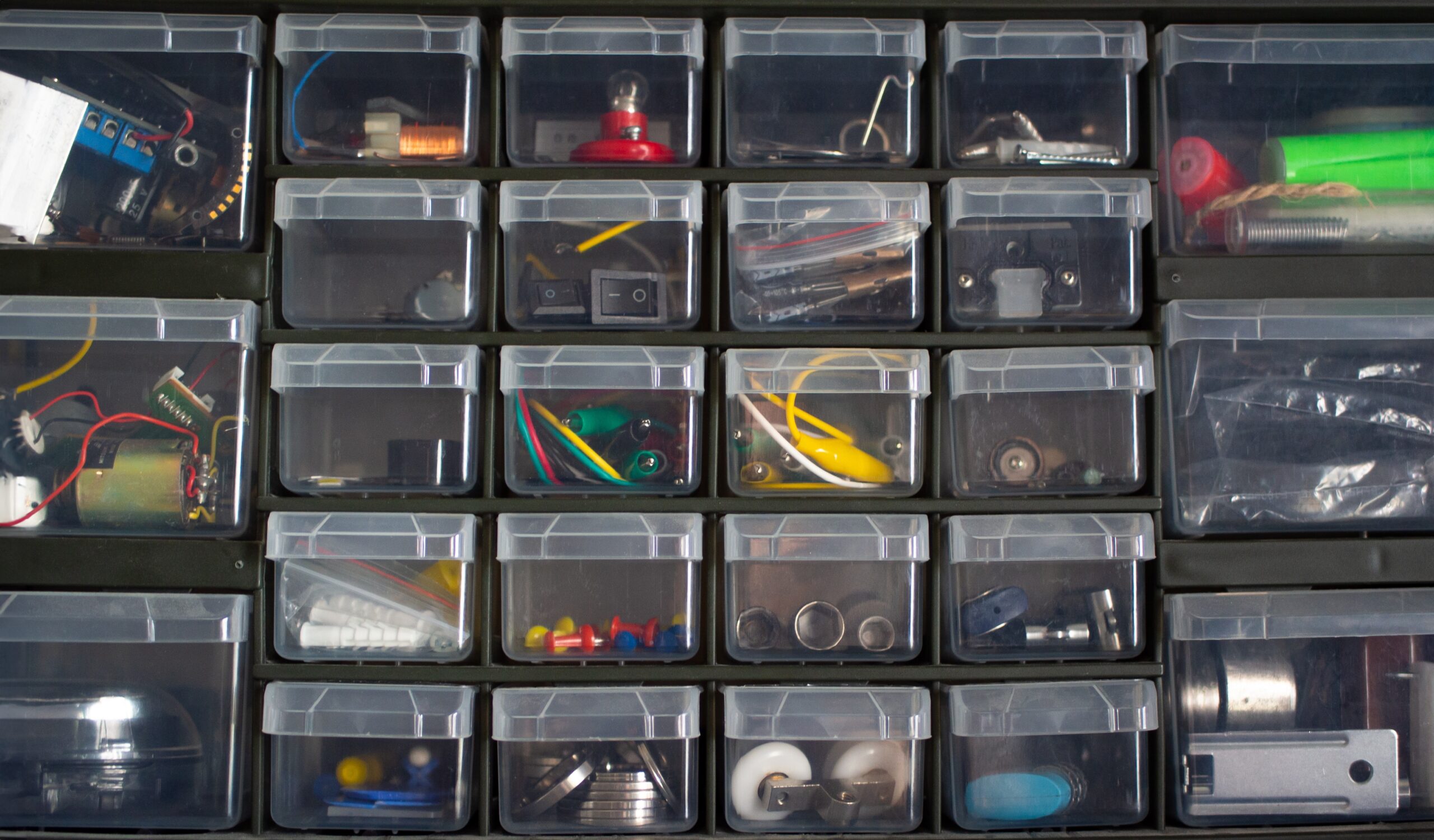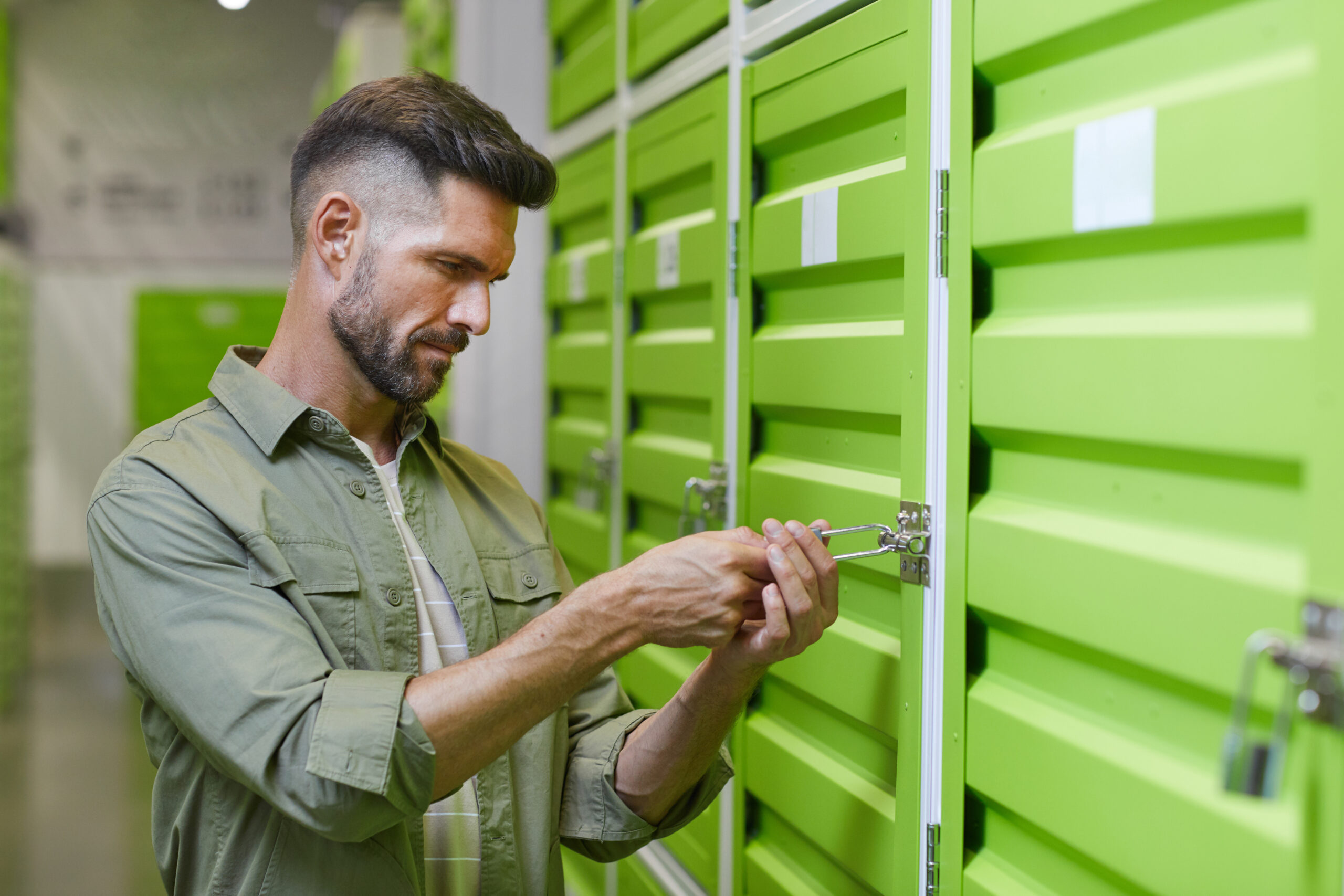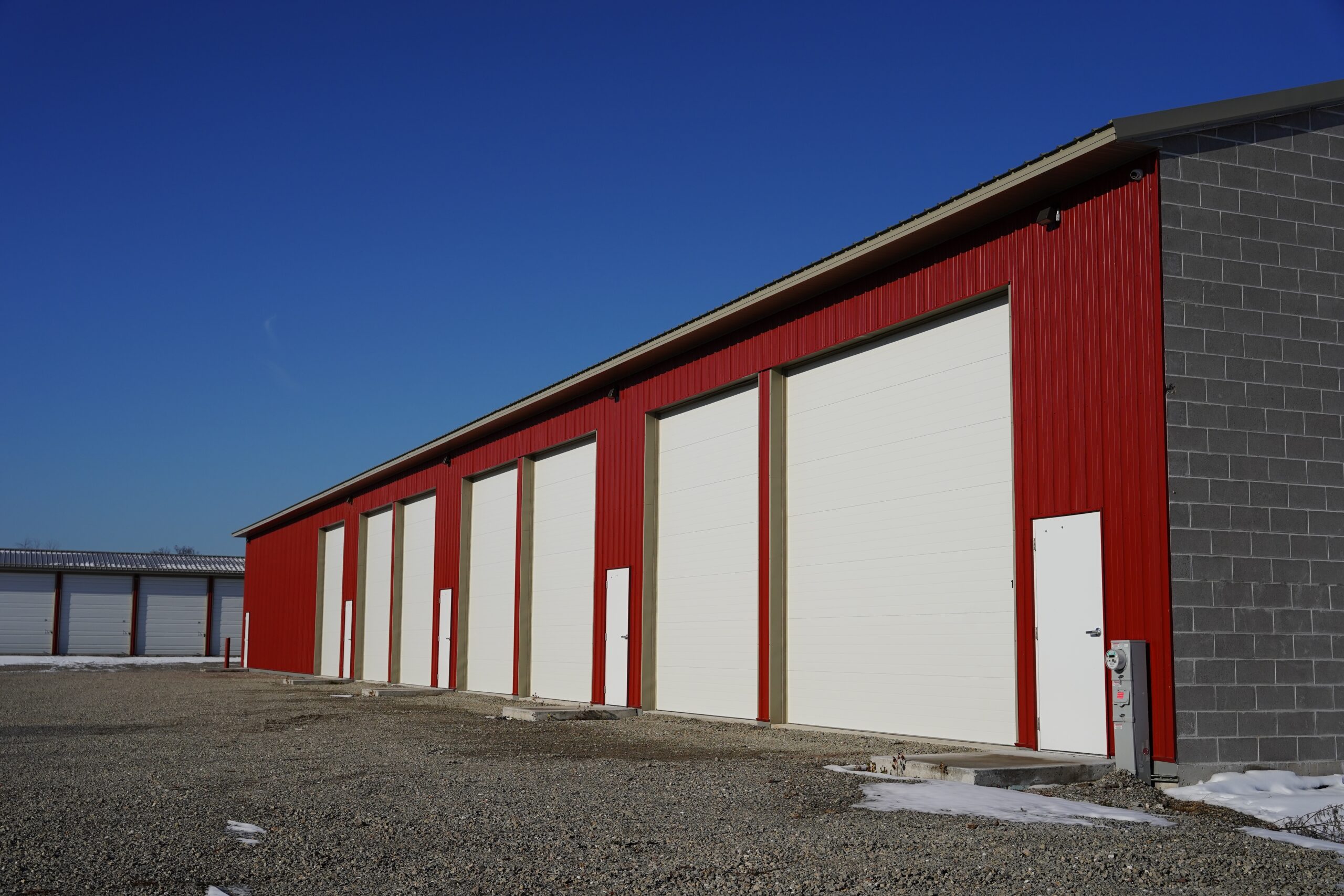Article takeaways
- Climate-controlled storage units maintain proper humidity levels (30-50%) and prevent the moisture buildup that allows mold and mildew to thrive in dark and damp storage environments.
- Remove dirt, food residue, perfumes, and moisture from appliances, furniture, clothing, and all other belongings before storage, using appropriate cleaning methods for each material type, and thoroughly dry each item before storing it.
- Pack items in airtight plastic bins, vacuum-sealed bags, and mold-resistant covers, avoiding regular plastic wraps that can trap moisture and foster mold growth.
- Space items apart to allow air circulation, elevate belongings off the floor using shelves or pallets, and include moisture absorbers like silica gel packets throughout the unit.
- Visit your storage unit periodically to conduct routine storage maintenance, checking for musty odors, visual signs of mold, and ensuring that climate control systems are functioning correctly, especially after extreme weather events.
I can’t think of a reason why anyone would be happy to see mold and mildew, especially in a storage unit.
Mold growth in a storage unit is typically caused by moisture buildup and high humidity levels. Mildew and mold growth pose significant risks to stored items, leading to damage and deterioration.
And that’s not to mention the health risks mold spores present for sensitive people — allergic reactions and asthma episodes.
Now, you may already know that mold spores thrive in dark environments that stay damp due to high moisture levels. This makes basements, sheds, storage containers, and storage facilities all potential hotspots for mold growth.
The most at-risk items are leather, clothing, soft plastics, paper products (including cardboard boxes), wood, upholstered furniture, and mattresses… everything you would keep in storage, right?
Mold removal typically requires a mold remediation company and professional restoration experts, which is why proactive mold growth prevention is key.
This helpful guide shares expert storage tips on how to prevent mold and mildew in storage units. As you’ll see below, the first step to storage mold prevention is choosing the right storage facility.
We’ll also reveal how our signature Storage.com search tool can help you find the perfect storage unit to protect your belongings from mold, mildew, and outdoor weather conditions.
Choose the Right Storage Unit
Not all storage spaces are created equal, especially when it comes to employing storage solutions to keep mold and mildew at bay. Here’s what to be on the lookout for to keep your stuff clean and dry:
| Climate control | A climate-controlled unit keeps humidity levels just right, not giving mold and mildew the chance to party. |
| Proper size | Choose a storage unit size that fits your stuff comfortably. Too tight, and you’re asking for trouble with no room for air to move. |
| Ventilation | Good airflow keeps the air fresh and prevents moisture from settling in. |
As you can see, scoring a climate-controlled storage unit is the biggest step you can take to prevent mold. More than just a heated and air-conditioned unit, climate control employs centralized air purifiers and a relative humidity gauge for temperature and moisture management.That said, we suggest factoring in unit size and decent airflow into your decision-making process as well. Other factors include security features and accessibility.
Clean Your Items Before Storing Them
Before you start packing, what you need is a clean start for all your stored items. As a generic rule, use non-abrasive cleaners and make sure everything is fully dry before moving on. Pay close attention to the manufacturer’s instructions, where available, or perform spot tests when uncertain.
Here are some extra details based on item type and material:
| Items | How to Clean |
|---|---|
| Kitchen Appliances |
Fridge: Toss out old food, clean shelves and drawers in soapy water, and dry them. Wipe the interior and consider a baking soda container to absorb moisture. Microwave and oven storage: Use a vinegar-water solution for the microwave interior and an oven cleaner, plus a heat cycle for the oven. Clean removable parts with soapy water and dry them completely. |
| Washer and dryer | Run the washer with two cups of vinegar on the hottest cycle, then scrub the drum with a vinegar and water solution. Clean the soap dispenser and lint container and sanitize the dryer drum with mild soap and water. |
| Antique and wooden furniture | Dust thoroughly, then clean with a mild dish soap solution without soaking the wood. Dry off any excess moisture. Use a tea-based cleaner to remove waxy buildup and polish the wood. |
| Leather furniture | Dust with a microfiber cloth, then gently clean with a soap-dampened cloth. Don’t rinse; buff it instead to condition the leather. |
| Fabric Upholstery | Vacuum to remove debris, test and apply a vinegar-water solution for stains. Clean with an antibacterial cleaner and let it dry completely. |
| Outdoor furniture | Wipe wicker with a damp cloth, wash cushions with a soap-Borax-water solution, and clean plastic resin with an all-purpose cleaner. Dry thoroughly before disassembling for storage. |
| Clothing | Clean all clothing to remove perfumes, lotion, and sweat that could cause damage and discoloration over time. Dry completely before packing. Consider professional cleaning for ease and efficiency. |
Proper Packing, Organization, and Ventilation for Moisture Control
When it comes to battling the mold and mildew brigade, every little detail counts: how you pack items for storage, how you organize them in the unit, and making sure air circulation is top-notch.
- Wrap your belongings in breathable materials to keep the air moving. Only use plastic wraps if you’re vacuum-sealing; otherwise, plastic will trap moisture and attract mold.
- Airtight containers are gold for fabrics, and vacuum sealing is your best bet for the long term.
- Pay attention to special items as they need special care. Use a heavy, breathable cloth and specialized boxes for artwork and corrugated cardboard boxes with acid-free packing paper for books.
- Place silica gel packs in boxes to ward off moisture and replace them regularly.
- Spread silica gel packets or other moisture absorbers throughout the storage unit to keep the air dry, especially in more humid climates.
- For proper storage unit humidity control, use a hygrometer (or a relative humidity meter) to make sure everything stays in the ideal 30% to 50% range.
- Keep items spaced out in the storage unit to let air circulate freely. Avoid pushing boxes against walls or clustering them too tightly.
- Use shelves or pallets to lift your belongings off the floor, protecting them from potential dampness creeping in from below.
- Open your unit to let fresh air in now and then; it can do wonders for displacing stale, moist air.
- Keep any built-in vents clean and unblocked to ensure they’re working their magic to the fullest.
Choose Mold-Resistant Materials and Add Protective Coverings
While corrugated cardboard boxes are your go-to for books, for everything else, you have the mighty plastic bin. Not any will do, though, as you have to make sure all storage containers are airtight to lock out the mold. Even for containers with strong lids, like those with depressor seals, you can take it up a notch with duct tape wrapped tightly around the lid’s edge.
What you can do to upgrade your plastic bin is fill it snugly and consider using internal lids for that extra-tight seal. No internal lid? No problem. Grab some cling film and an elastic band. Stretch the film over the box, smooth out any creases, and secure it with the band. Then pop the external lid on and, voila, you’ve got yourself a DIY airtight container.
For large things that don’t fit into plastic boxes, use mold-resistant covers and wraps. Now, if you’re going to wrap up your items like they’re going into battle, make sure you’re not accidentally creating a moisture trap. Protecting items from mold and mildew is what you’re going for, not suffocating them.
Not sure what qualifies as mold-resistant in the world of wraps and covers? Here’s a handy cheat sheet:
| Types of covers and wraps | Description |
|---|---|
| Vacuum-sealed plastic bags | Not specifically mold-resistant, but they significantly reduce moisture levels, making it hard for mold to grow. Particularly useful for textiles, clothing, and bedding. |
| Heavy-duty vinyl covers | Easy to clean and durable. Suitable for furniture and larger items if properly sealed. |
| PEVA storage bags | A chlorine-free vinyl alternative. Suitable for clothing and small upholstered items, as a safer and less toxic option compared to traditional PVC vinyl. |
| Nylon tarps | Durable and tear-resistant, but make sure they have waterproof coatings. Great for covering and protecting larger items or stacks of boxes. |
| Canvas tarps | Not inherently mold-resistant, but can be treated with a waterproof and mildew-resistant coating. Good protection for larger items, as the breathable nature of canvas allows air circulation. |
Maintenance and Regular Inspections are Important
Keeping your stuff safe from mold and mildew means playing detective now and then. So, what’s the game plan? First, make checking on your storage unit and all the goodies inside a regular thing. Don’t forget to peek in, especially after the weather’s been acting up. Even if your unit’s got climate control, it’s smart to make sure it’s doing its job, keeping things not too hot, not too cold, and just dry enough.
Now, you may keep your eyes peeled for any weird colors or gooey spots, but it’s your nose that is the best tool. A funky, musty smell usually means mold is trying to make its way through. And some of your things, like your favorite outfits, old books, and comfy chairs, might get moldy more easily than others, so pay extra attention to them.
Catching mold spots early on means you can clean up the mess yourself before it gets worse. If you’re late to the party and the mold has taken over your unit already, don’t hesitate to reach out for help. Storage unit mold is no joke — that’s a job for the pros.
Say No to Mold in Self-Storage Units
Now you have a pretty good idea of how to prevent mold and mildew in a storage unit. Remember, mold solutions are all about the prep work, the right gear, and keeping a keen eye (and nose) on the lookout.
Climate-controlled storage units are your best pals in the fight against mold, but cleaning your items before stashing them is equally important.
Then, with the right materials like airtight plastic bins and mold-resistant wraps, you’re building a fortress against the damp. Throw in a bit of our best storage organization practices to let that air flow, and you’re all set with storage unit mold prevention.
That said, not all storage units are created equal. And as we said from the start, storage mold prevention begins with renting the right storage unit.
All your precautions can be wasted if your storage unit isn’t climate-controlled. And even if you score a good deal on some climate and waterproof storage units, is it for your personal items or for business storage needs? If it’s the latter, you need a unit licensed for business and commercial storage.
But don’t fret – Storage.com is here to help you find the ideal unit for preventing mold and mildew.
Storage.com can help you select the ideal storage space. Just punch your zip code into our handy storage search tool to find a storage unit between your house and your favorite hiking or camping spot.
Our site searches through over 20,000 storage facilities nationwide. The search tool lets you filter your results based on the search parameters you set. Narrow your results based on location and amenities like climate control and 24-hour access.
Storage.com lets you compare prices and unit sizes and reserve your storage unit for free in minutes. No commitment and no credit card required!






